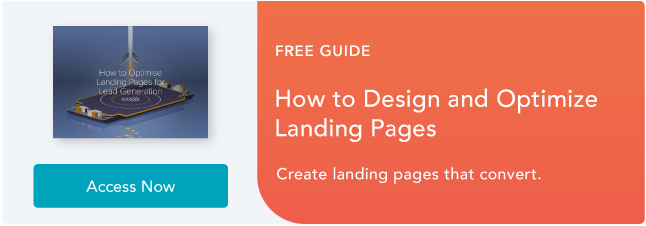- Like
- SHARE
- Digg
- Del
- Tumblr
- VKontakte
- Flattr
- Buffer
- Love This
- Save
- Odnoklassniki
- Meneame
- Blogger
- Amazon
- Yahoo Mail
- Gmail
- AOL
- Newsvine
- HackerNews
- Evernote
- MySpace
- Mail.ru
- Viadeo
- Line
- Comments
- Yummly
- SMS
- Viber
- Telegram
- JOIN
- Skype
- Facebook Messenger
- Kakao
- LiveJournal
- Yammer
- Edgar
- Fintel
- Mix
- Instapaper
- Copy Link
A landing page is a standalone website page dedicated to a specific marketing campaign that is meant to convert site visitors into leads. Landing pages typically offer visitors something that they may be interested in, like an Ebook or a free trial, in exchange for contact information. Getting this information then gives businesses the tools they need to further nurture leads and urge them down the purchasing funnel.
Since landing pages are tailored to customer interests, using them in your marketing strategy can help you convert a significant number of qualified prospects since you can assume that they’re ending up on a landing page because its content interests them.
If you’ve yet to consider using them or you want to update your current landing page strategy, this piece will go over 11 stats that make a case for using landing pages as a means to increase your conversion rates and generate more leads.
11 Stats That Make a Case for Landing Pages
1. The average landing page conversion rate across all industries is 9.7%.
Given that 10% is a benchmark for a good conversion rate, taking the time to create a landing page that carefully considers the interests of your target audience will benefit your business. Whether you sell SaaS or clothing, a higher conversion rate from landing pages means a longer list of leads to nurture into paying customers.
2. Landing pages are the least popular type of sign-up form, but they have the highest conversion rate (23%), and 62.6% of leading landing pages already use them.
Using landing pages to obtain customer contact information for lead nurturing is likely to bring higher conversions. If you decide to use forms, the highest-converting number of fields is 3, with an average conversion rate of 10%. The most popular combinations use email address and name (7%) and email address and birthdate (5.7%).
3. Businesses using optimization software for their landing pages see an average conversion lift of 30%.
While optimization is always an essential factor for generating traffic, using optimization tools to perfect your landing page strategy is valuable for increasing conversions.
4. Addressing buyer fears on landing pages can increase conversion rates by 80%.
Marcus Sheridan, a keynote speaker at Inbound 2019, ran an experiment where he found that addressing customer fears, like email spam or personal date use, on his landing pages increased his form conversion rate. If you’ve found that your landing pages aren’t converting as you’d like them to, consider using Sheridan’s strategy to be upfront with consumers about what will come from completing forms on your landing pages.
5. Personalized CTAs convert 202% better than default versions.
Consumers prefer personalization because it ensures that they aren’t overloaded with irrelevant information that doesn’t pertain to their interests. Given this, using personalized and targeted CTAs in your landing pages will likely increase your conversion rates.
6. 48% of top landing pages ranked in Google Maps and organic search query results
Ensuring that your landing pages are SEO optimized for both regular search and Google Maps results increases the likelihood that they’ll show up in both types of search queries, increasing exposure and the possibility of generating more leads. If you also link landing page CTAs in email ads, you’re ensuring exposure and visibility from three different channels.
7. 65% of top landing pages have their business name in the title tag.
Since customers value transparency, using a recognizable brand name and logo shows them that you’re not running a scam or being deceitful. You’re claiming ownership of the CTAs and personal information you’re asking for. Therefore, Including your business name on your landing page is a simple step you can take that can help you increase conversions.
8. 30% of top landing pages use video content.
If you already use video as a part of your marketing, incorporating it into your landing page strategy can help you increase conversion rates. In fact, relevant embedded video content can increase conversions by 86%, and 80% of video marketers say that video has directly increased sales.
9. 36% of top landing pages have testimonials, 11% have reviews.
You likely already solicit reviews and testimonials from current customers. Repurposing them to use on your landing pages can increase customer trust and higher conversion rates, especially considering that 60% of consumers think that user-generated content (UGC), like reviews, are the most authentic form of content a brand can use.
10. 55% of top landing page submissions on the HubSpot blog came from Ebook offers.
If you have a blog or website that wants to distribute long-form instructional content, offering Ebooks in your landing pages can help increase your business conversion rates.
11. 49% of marketers report that increasing customer acquisition is their primary objective in 2020, and a top priority for marketers was generating leads.
If you fall into either of these categories, landing pages can be a valuable element of your marketing strategy to generate leads and increase customer acquisition.
Landing pages are a valuable piece of your marketing strategy.
Considering the above stats, we can see that marketers who create landing pages that build trust with page visitors, provide valuable information, and use different content types see higher conversion rates.
Whether you already use them and aren’t obtaining the results you desire or you’re new to landing pages in general, using them will likely help you draw in new customers and drive revenue.
Originally published Jan 6, 2021 7:00:00 AM, updated January 06 2021




